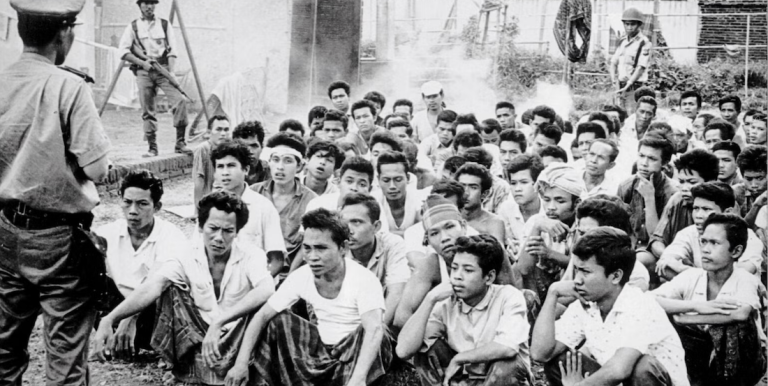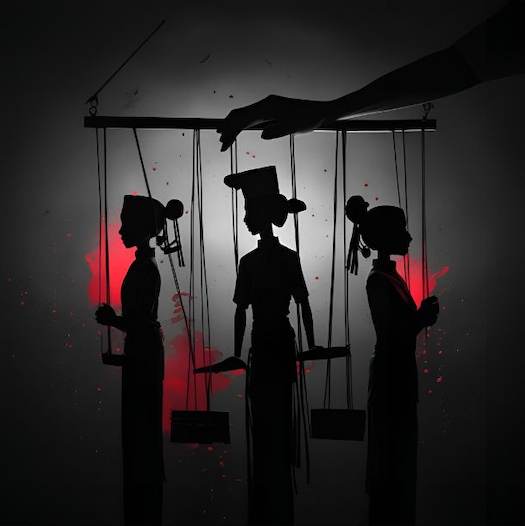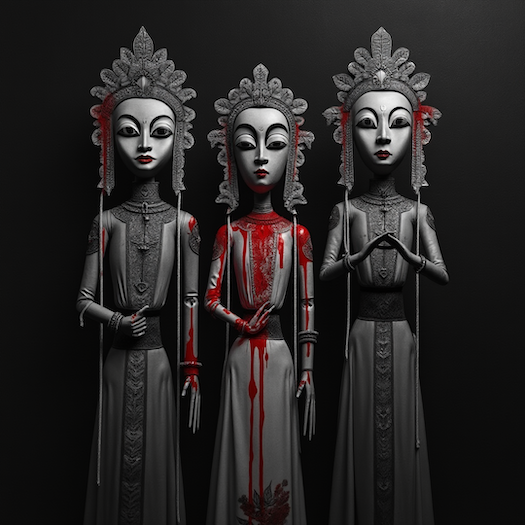
Historical Truth Emerges From Decades of Silence About Mass Killings
New York, N.Y. – In the humid twilight of October 1965, Indonesia‘s rivers ran red with blood. What began as a military coup quickly transformed into one of the 20th century’s most systematic and brutal mass killings, claiming between 500,000 and one million lives.
For decades, this genocide remained shrouded in official silence, its victims forgotten and its perpetrators protected by state narratives that painted the massacre as necessary anti-communist action.

The events of 1965 marked a turning point in Indonesian history, ushering in General Suharto‘s authoritarian “New Order” regime that would rule for three decades.
Yet the full scope of this tragedy—targeting suspected communists, ethnic Chinese, intellectuals, and alleged sympathizers—only began emerging from the shadows in recent years through survivor testimonies, declassified documents, and international investigations.
The Spark That Ignited Horror
On September 30, 1965, a group of military officers kidnapped and killed six Indonesian generals in what they claimed was a preemptive strike against a planned CIA-backed coup.
Within hours, General Suharto had crushed this “September 30th Movement” and begun systematically eliminating the Indonesian Communist Party (PKI), then the world’s third-largest communist organization.
The violence that followed was neither spontaneous nor limited to political opponents. Suharto’s military, working with Islamic groups and criminal organizations, orchestrated a campaign of terror that swept across Java, Bali, and Sumatra. Entire villages were razed, families separated, and communities destroyed in what scholars now recognize as textbook genocide.
The Machinery of Death
The killings followed a deliberate pattern. Military units would arrive in villages with lists of suspected communists, often compiled through neighborhood surveillance and denunciations. Those targeted included teachers, union leaders, artists, and anyone associated with leftist organizations. The violence was deliberately decentralized, with local militias and religious groups recruited to carry out executions.
Anwar Congo, a former death squad leader whose confessions were documented in the acclaimed film The Act of Killing, described how perpetrators were encouraged to develop creative methods of murder. “We were told that if we killed the communists, we would be heroes,” he recalled in interviews. This psychological framework transformed ordinary citizens into willing executioners.
International Complicity and Cold War Politics
Declassified U.S. State Department documents reveal that the American government not only knew about the massacres but actively supported them. The Johnson Administration viewed the elimination of the PKI as a strategic victory in the Cold War, with officials privately celebrating the “tremendous kill” of communists.
The United Kingdom and Australia similarly maintained diplomatic relations with the emerging Suharto regime, prioritizing geopolitical interests over human rights concerns. This international silence enabled the consolidation of a military dictatorship that would rule Indonesia until 1998.
The Long Shadow of Silence
For thirty-three years, discussion of the 1965 killings remained taboo in Indonesia. The Suharto regime promoted a narrative portraying the victims as traitors who deserved their fate. History textbooks omitted details of the massacres, and survivors lived in fear of identification and persecution.
This official amnesia extended beyond Indonesia’s borders. Unlike other genocides of the 20th century, the Indonesian massacres received minimal international attention or commemoration. The United Nations took no action, and no international tribunal was established to investigate war crimes.
Breaking the Silence
The fall of Suharto in 1998 began a gradual process of historical reckoning. Civil society organizations, human rights groups, and courageous survivors started documenting testimonies and demanding acknowledgment. International documentaries, academic research, and advocacy campaigns gradually brought global attention to this forgotten genocide.

In 2016, the International People’s Tribunal on 1965 Crimes Against Humanity in Indonesia concluded that the killings constituted genocide and crimes against humanity.
While lacking legal authority, the tribunal provided a platform for survivors to share their stories and challenged the international community to confront this historical injustice.
The Unfinished Reckoning
Today, Indonesia continues grappling with the legacy of 1965. Former president Joko Widodo acknowledged past human rights violations but stopped short of issuing formal apologies or establishing a truth commission.
Many survivors remain stigmatized, and families of victims continue seeking answers about their loved ones’ disappearances.
The Indonesian experience demonstrates how state-sponsored violence can be normalized and forgotten when supported by international powers and protected by authoritarian rule.
As the world confronts contemporary atrocities, the lessons of 1965 remain painfully relevant: silence in the face of genocide enables its perpetuation and denies justice to its victims.
Shadow Play: Indonesia’s 1965 Massacre – “Genocide” – Revealed (July 10, 2025)
Audio Summary
Indonesia’s 1965 massacre claimed up to one million lives as General Suharto’s regime systematically eliminated suspected communists, ethnic Chinese, and intellectuals. Supported by Western powers during the Cold War, this genocide remained hidden for decades. Only recent investigations and survivor testimonies have begun revealing the full scope of these crimes against humanity, challenging Indonesia and the international community to confront this dark chapter of history.